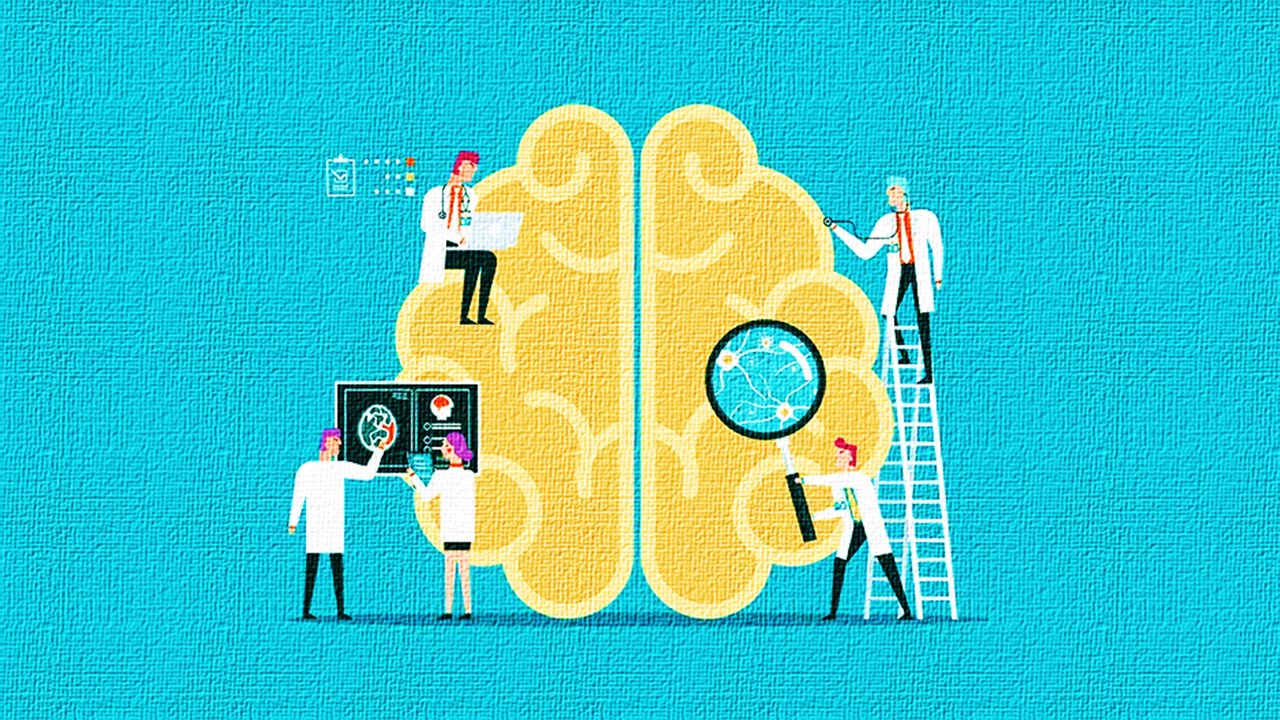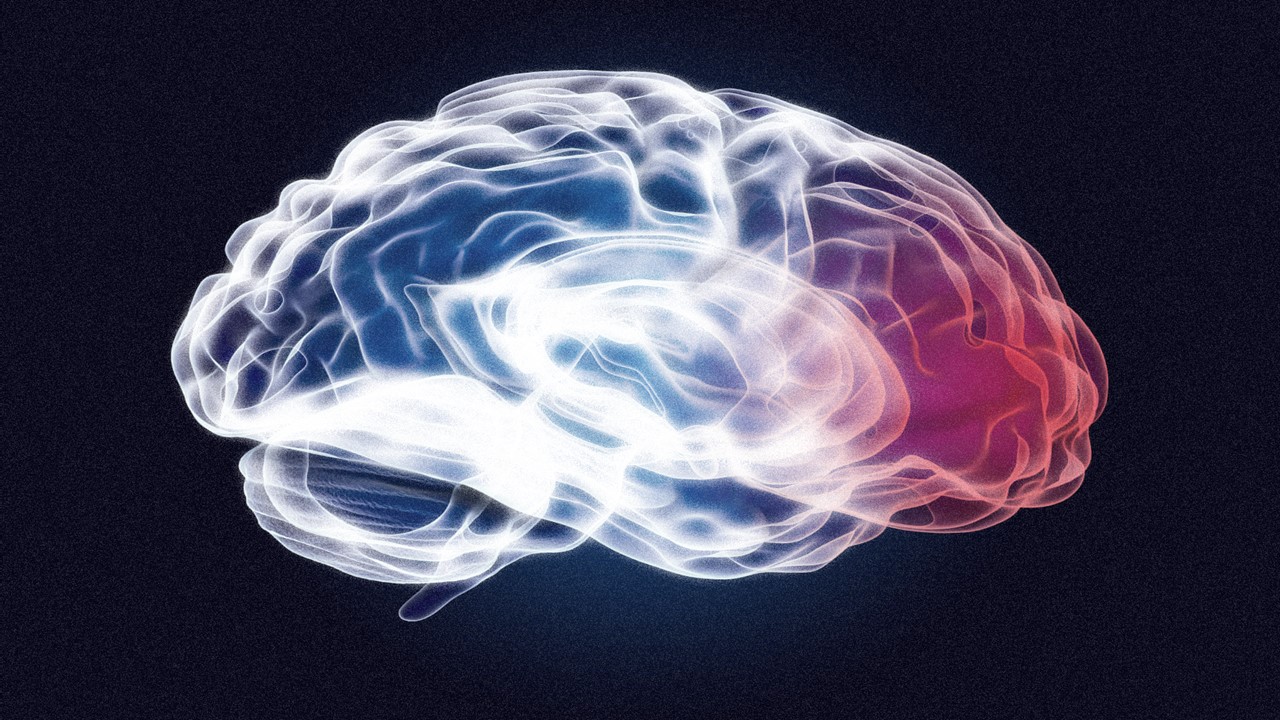More than 0.5% of people worldwide suffer with epilepsy, making it the most common neurological condition. Recurrent seizures that are unrelated to any known causes are its defining feature. Although while new research indicates that there may be a genetic component to the development of the condition, the etiology of epilepsy is still incompletely understood. Seizures, on the other hand, are signs of abnormal electrical activity in the brain and are characterized by bouts of abnormal, excessive, and synchronous firing of a group of neurons inside the brain that result in involuntary movement, sensation, or thinking. As a result of an imbalance between the brain’s excitatory and inhibitory processes, seizures may be caused by either natural or acquired neurological abnormalities of brain function. Seizures can have a variety of different causes, such as brain tumors or infections, head trauma, neurological diseases, systemic or metabolic abnormalities, alcohol addiction, drug overdose, or toxicity.
Anticonvulsant Necessitating Pathologies
Because it is frequently reliant on eyewitness descriptions of the occurrences, the diagnosis of a first epileptic seizure or epilepsy in primary care institutions is sometimes subjective and liable to error. Yet, a misdiagnosis, particularly one related to seizures, can have far-reaching detrimental effects on the patient, including loss of employment and driving rights, the possibility of toxic or inefficient medication being administered, as well as other socioeconomic effects.
Epileptic Seizures Classification and Recommended First Line of Treatment
Since their precision makes accurate diagnosis, medicine selection, and discussion of seizure disorders possible, the 1981 categorization of the epileptic seizure types and the 1989 classification of epileptic syndromes and epilepsies are still largely acknowledged as being useful and applicable today. Seizures are divided into two main categories: generalized seizures and partial seizures, depending on their early signs and symptoms and the electroencephalogram (EEG) pattern.
The EEG exhibits an aberrant pattern for each kind of epilepsy. The EEG shows erratic, abnormal electrical activity in the brain. Most of the AEDs that are now on the market function by stopping, avoiding, or reducing this electrical activity. Although the specific reasons of these abnormal alterations are still unknown, it has been proposed that there is a place or center of impaired or abnormally hyperexcitable neurons in the brain. These neurons have the capacity to activate excessively and occasionally attract nearby neurons, which then prompt additional neurons to fire. In order to identify the different types of epilepsy, it is crucial to know where and how much aberrant activity is occurring.
Primary Generalized Seizures
The principally generalized tonic-clonic seizures (grand mal) and the absence (petit mal) seizures are the two main categories of generalized seizures. The classic tonic-clonic seizure, which is predominantly generalized, is frequently preceded by a sequence of bilateral muscle jerks, loss of consciousness, and then tonic and then clonic spasms. The typical absence seizure (classic petit mal) is characterized by a quick, brief loss of consciousness (~10 seconds), often without any motor activity, but this is not unusual. According to a recent evidence-based metaanalysis of the efficacy and effectiveness of AEDs, the best initial monotherapies for patients with generalized seizures are carbamazepine (CBZ), oxcarbazepine (OXC), lamotrigine, valproic acid (VPA), phenytoin, and topiramate (TPM), whereas children with absence seizures respond best to lamotrigine, VPA, or ethosuximide.
Partial Seizures
Simple partial seizures (focal) and complicated partial seizures are two common forms of partial seizures (temporal lobe or psychomotor). Sixty to seven percent to eighty percent of adult patients develop partial seizures, which are the most frequent seizure type. Jacksonian motor epilepsy, in which the Jacksonian march may be observed, is a typical simple partial seizure. The apparent seizure advances over the part of the body controlled by the concerned cortical site as the abnormal discharge moves along over that area. If left untreated, partial seizures can develop into secondarily generalized partial seizures, a different type of seizure (tonic–clonic or grand mal). Patients with recently discovered or untreated uncomplicated partial seizures should get CBZ or phenytoin for adults, lamotrigine or gabapentin for older individuals, and OXC for children as their first line of treatment. The psychomotor or temporal lobe seizure is a type of complicated partial seizure. There is an aura, followed by a 2–3 minute period of confusing, odd, but seemingly deliberate conduct, frequently with no recall of the event. Misdiagnosis of the seizure as a psychotic episode is possible. Complex partial seizures are far more challenging to manage, despite the fact that the initial treatment is the same.
Neuropathic Pain Indicated Anticonvulsants
Neuropathic pain is defined by a neuronal hyperexcitability in injured sections of the nerves, notwithstanding its variety in origin and anatomical sites. This neuronal hyperexcitability and a number of the accompanying cellular alterations resemble epilepsy quite a bit. As a result, it is not surprising that anticonvulsants like CBZ, gabapentin, and more recently its close analog, pregabalin, were licensed for treating pain caused by trigeminal neuralgia, diabetic neuropathy, and other neuropathic symptoms. Because of their absence of probable drug interactions and low side effect profiles, gabapentin and pregabalin have both established themselves as significant therapy options for neuropathic pain.
Anticonvulsant Pharmacology
In both medical and scientific literature, the phrases anticonvulsant and antiepileptic drug (AED) are interchangeably used to refer to a wide range of drugs used in clinical settings to control seizures in patients with epilepsies. To avoid confusion, the term “AED” should only be used when referring to the therapeutic use of anticonvulsants in the context of treating epilepsy because some of these medications are also used to treat neuropathic pains and/or to manage severe mood changes in patients with mania and other mood disorders.
Three fundamental processes are thought to have a role in the antiepileptic activity of the anticonvulsants that are currently on the market at the cellular level. These include (a) altering voltage-gated ion channels (Na+, Ca2+, and K+), (b) enhancing inhibitory neurotransmission mediated by -aminobutyric acid (GABA), and (c) reducing excitatory (especially glutamate-mediated) neurotransmission in the brain. Several AEDs, especially the newer ones, function through several of the aforementioned modes of action, giving them a greater range of antiepileptic effect.
Voltage-Gated Ion Channels as Targets for Anticonvulsants
Voltage-Gated Sodium Channels
Phenytoin, CBZ, lamotrigine, and some of the more recent AEDs, such as OXC, felbamate (FBM), and zonisamide, all have voltage-gated sodium channels (VGSCs) as their molecular target in the presynaptic nerve terminal of excitatory glutamate receptors. These aromatic AEDs prevent excessive neuronal activity by attaching to a location close to the inactivation gate, extending the time that VGSCs are inactive. Based on molecular simulations with these aromatic AEDs, Unverferth et al. proposed a pharmacophore model that phenytoin interacts with the putative inactivation gate receptor. This model has two distinct hydrogen bonding sites and an aromatic binding site for interacting with powerful AEDs like phenytoin and lamotrigine.
Voltage-Gated Calcium Channels
Voltage-gated calcium channels (VGCCs) are crucial for controlling Ca2+ signaling, which is linked to numerous significant cellular events, including the release of excitatory glutamate neurotransmitters, changes in long-term potentiation in learning and memory, and the preservation of nerve cell homeostasis. According to some research, an increased Ca2+ influx is crucial to the initiation and development of epileptic episodes. VGCCs can be divided into various classes. The main molecular targets of gabapentin and pregabalin, both of which are useful in treating refractory partial seizures, are the high-threshold L-type Ca2+ channels in the presynaptic glutaminergic receptors, which need significant depolarization for activation. The molecular targets of AEDs like ethosuximide and zonisamide, however, are low-threshold T-type Ca2+ channels, which only need a slight depolarization to get activated.
Voltage-Gated Potassium Channels
Because voltage-gated K+ channels are closely related to membrane repolarization processes, they are another alluring target for the development of novel AEDs. One of the proposed mechanisms of action for levetiracetam (LEV), a new AED recently approved for supplementary therapy of adult patients with refractory partial seizures, is the reduction of voltage-operated A-type potassium currents.
Anticonvulsant Therapy Targeting of GABAA Receptors
The ability of GABAergic activation in the brain to reduce cellular excitability that results in convulsive seizures is now widely acknowledged. The main inhibitory neurotransmitter in the brain, GABA, has two ligand-gated ion channels that are important for mediating its effects. One of these channels is the GABAA receptor. Increased chloride conductance is made possible by activating the GABAA/benzodiazepine (BZD) receptors/chloride channel complex, which stops neuronal excitement from spreading. The GABAergic inhibitory synapses could be affected by AEDs in a number of ways, including (a) drugs that boost GABA biosynthesis (gabapentin, pregabalin, and VPA), (b) drugs that prevent GABA degradation (vigabatrin), (c) drugs that prevent GABA reuptake (tiagabine), and (d) drugs that bind to an allosteric site on the postsynaptic GABAA receptor complex and (barbiturates, BZDs, neurosteroids, FBM, TPM).
GABA Biosynthetic Pathway Enhancing Xenobiotics
The GABAergic neurons biosynthesize GABA, the primary inhibitory neurotransmitter in the brain, by decarboxylating the amino acid L-glutamic acid (itself an excitatory amino acid neurotransmitter in the brain). L-glutamic acid decarboxylase is the enzyme that catalyzes this conversion at the rate-limiting level (GAD). Pyridoxal phosphate is a crucial cofactor for this enzyme process (vitamin B6). Another pyridoxal-dependent enzyme, the GABA transaminase (GABA-T), which transfers an amino group from GABA to α-ketoglutarate to produce L-glutamic acid and succinic acid semialdehyde, degrades GABA after it has been released from the synaptic nerve terminal (SSA). The aldehyde dehydrogenase succinic semialdehyde dehydrogenase (SSADH) further oxidizes SSA to succinic acid, which can either enter the TCA cycle to produce more α-ketoglutarate or be further reduced by SSA reductase (an alcohol dehydrogenase that catalyzes the interconversion of SSA and 4-hydroxybutyric acid).
Being a 3-substituted GABA, gabapentin and notably pregabalin may also be able to activate GAD in addition to their main anticonvulsant effect at the presynaptic glutaminergic receptors’ high-threshold L-type Ca2+ channels. Both of these medications are only moderately effective in activating GAD, but their pharmacological effects on GAD cannot be dismissed given that gabapentin was able to increase brain GABA levels in patients with epilepsy an hour after the initial dose by between 75% and 100%.
In line with gabapentin and pregabalin, VPA raises GABA levels in the brains of epileptic sufferers. It is commonly acknowledged that VPA blocks SSADH, the enzyme in charge of turning SSA into succinic acid. There is still substantial dispute over the precise method by which this inhibition raises GABA levels in the brain (i.e., from an indirect stimulation of GAD to an inhibition of GABA-T). Nevertheless, SSA reductase, an enzyme that converts SSA to γ-hydroxybutyric acid, an epitogenic metabolite of GABA, is inhibited by GABA as well. Due to the buildup of VPA’s product, SSA, near GABA-enzyme T’s active site, it makes sense to hypothesize that VPA increases GABA levels by reversing the transamination reaction mediated by GABA-T.
GABA Breakdown Inhibiting Drugs
An irreversible inhibitor of GABA-T, vigabatrin (γ-vinyl-GABA) was rationally created based on the molecular basis of the transamination reaction. In a nutshell, vigabatrin competes with GABA for binding to GABA-T due to structural similarities and combines with cofactor pyridoxal phosphate, which is structurally related to GABA, to generate a Schiff base intermediate. Yet unlike its substrate GABA, vigabatrin forms a reactive intermediate during the process of adding the amino group to pyridoxal phosphate and binds to the enzyme’s active site right away, irreversibly blocking GABA-T and raising GABA levels in the central nervous system.
GABA Reuptake Inhibiting Medications
GABA transporters actively re-enter released GABA into GABAergic neurons or glial cells in the brain (GATs). Tiagabine is a selective inhibitor of the neuronal and glial GAT1 at the GABAergic neurons and an effective medication for the treatment of individuals with refractory epilepsy. It shares structural similarities with nipecotic acid. Tiagabine can enter the brain freely and more selectively than nicopetic acid does toward GAT1 thanks to the addition of two lipophilic heterocyclic rings. Nicopetic acid’s capacity to bind GAT1 is not affected.
Chloride Influx Modulators: GABAA Receptor Complex Binding Drugs
Several clinically helpful hypnotic-sedatives, BZDs, and barbiturates (such as phenobarbital), as well as other AED medications, exert their pharmacological effects by interacting with a specific neuronal location on the GABAA-BZD receptor-chloride channel complex. The glycoprotein pentamer GABAA-chloride ionophore, which has two α, two β, and one γ subunits, is found throughout the mammalian brain. It has been proposed that by increasing the frequency of chloride channel openings, BZD agonists like clonazepam promote GABA-mediated inhibitory neurotransmission. As a broad-spectrum AED , TPM also binds and makes chloride channels open more frequently, although it does so at a different place than BZDs. The duration of chloride channel openings is lengthened by barbiturates, which bind to a third binding site on the GABAA receptor complex. It has been proposed that the binding of these medicines to their specific binding sites causes conformational changes, enabling GABA to influence chloride channel openings more effectively.
Anticonvulsant Therapy Targeting of Excitatory Glutamate-Mediated Receptors
The two most significant glutamate receptor families are the ligand-gated, ionotropic receptors and the G-protein–coupled metabotropic receptors. The acidic amino acids L-glutamate and L-aspartate operate through these receptors as the brain’s most major excitatory neurotransmitters. The ligand-gated glutamate receptors, like the N-methyl-D-aspartic acid (NMDA)/α-amino-3-hydroxyl-5-methyl-4-isoxazole propionic acid (AMPA) receptors, control sodium and calcium influx and are involved in mediating excitatory synaptic transmission, including the start and progression of seizure activity. Important mental processes, such as long-term potentiation in learning and memory development as well as various neurodegenerative illnesses, are brought on by activation of these receptors. These receptors have the potential to be used as therapeutic targets for the treatment of epilepsy as well as other neurodegenerative diseases like Alzheimer’s, stroke and other long-term debilitating conditions. NMDA antagonists are toxic and have unpleasant side effects, thus efforts to create ones that are both efficient and secure have failed. Consequently, none of the available AEDs directly affect postsynaptic glutamate receptors, with the exception of TPM, which derives some of its antiepileptic effect through regulating the AMPA receptor, and FBM, which appears to bind to the glycine binding site on the NMDA receptor. On the other hand, metabotropic glutamate receptors control the release of GABA, glutamate, and other critical neurotransmitters in the brain. In order to develop drugs for pain, addiction, Parkinson’s disease, schizophrenia, and other neurodegenerative disorders, these receptors are thus fascinating new therapeutic targets.
Future Development of Antiepileptic Drugs
More over a third of newly diagnosed epilepsy patients still require an efficient AED to manage their seizures, despite the recent advent of newer AEDs. Besides that, none of the AEDs in use today prevent the development of refractory epilepsy; instead, they only operate as prophylactic against the symptoms of epilepsy. Future directions in the development of AEDs must come from either a deeper comprehension of epileptogenesis, particularly the genetic mechanisms underlying disease progression or the emergence of resistance following protracted pharmacotherapy, or from an innovative design approach that results in new AEDs with distinctive mechanisms of action. A number of these medications are presently through various stages of clinical testing. For more information on these agents, readers are referred to recent reviews of anticonvulsant medication clinical trials.
Subscribe
to get our
LATEST NEWS
Related Posts

Neuroscience & Neuropharmacology
Cannabinoids and Autism: Evaluating Their Role in Sleep and Behavior
In the quest to improve the lives of individuals with autism spectrum disorder, rigorous science remains our most vital tool—revealing not just what works, but what does not.

Neuroscience & Neuropharmacology
Two-Dimensional Neural Geometry: A Revolution in Understanding Human Working Memory
Working memory, a cornerstone of human cognition, has long been mischaracterized as a passive storage system.
Read More Articles
Myosin’s Molecular Toggle: How Dimerization of the Globular Tail Domain Controls the Motor Function of Myo5a
Myo5a exists in either an inhibited, triangulated rest or an extended, motile activation, each conformation dictated by the interplay between the GTD and its surroundings.
Designing Better Sugar Stoppers: Engineering Selective α-Glucosidase Inhibitors via Fragment-Based Dynamic Chemistry
One of the most pressing challenges in anti-diabetic therapy is reducing the unpleasant and often debilitating gastrointestinal side effects that accompany α-amylase inhibition.













